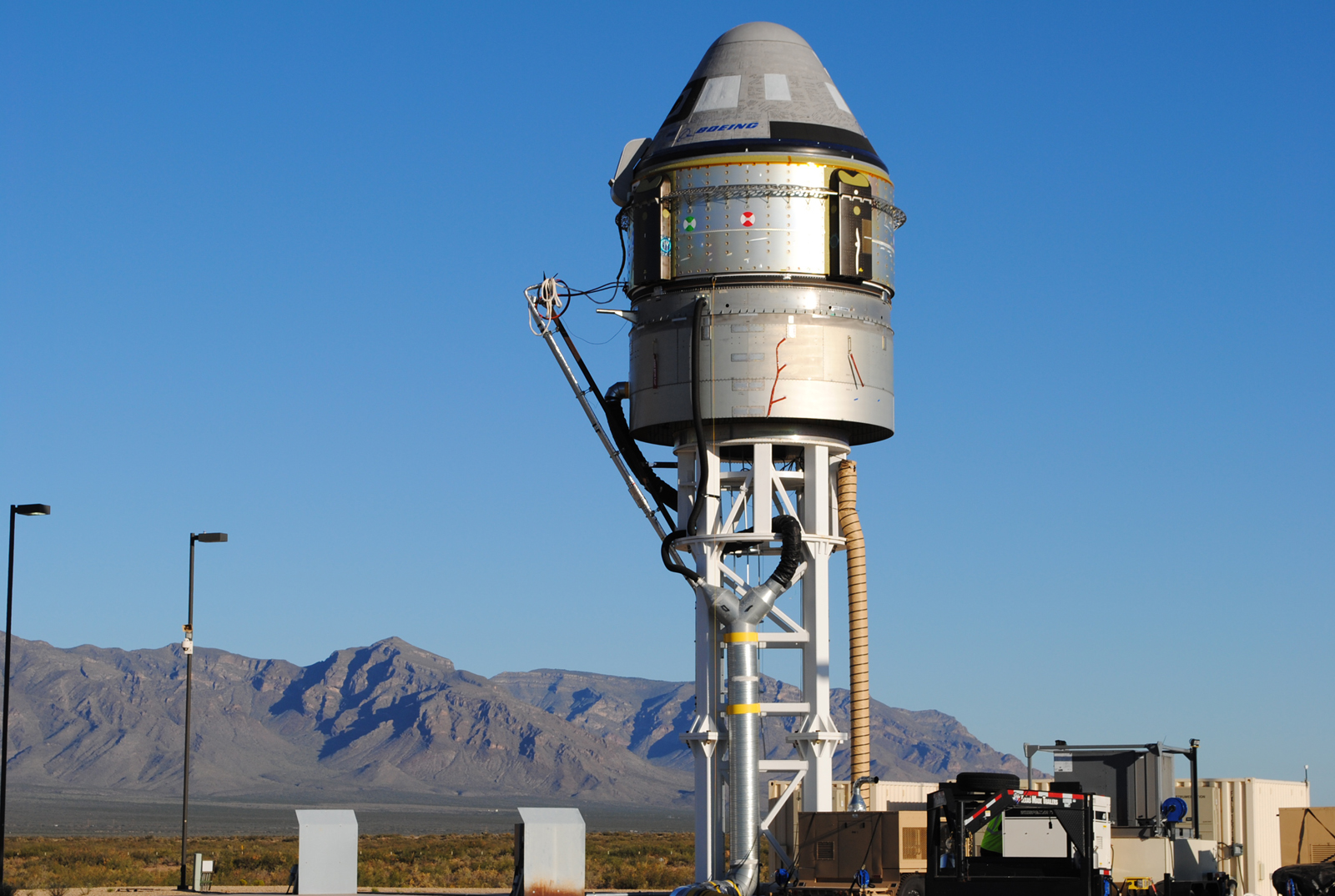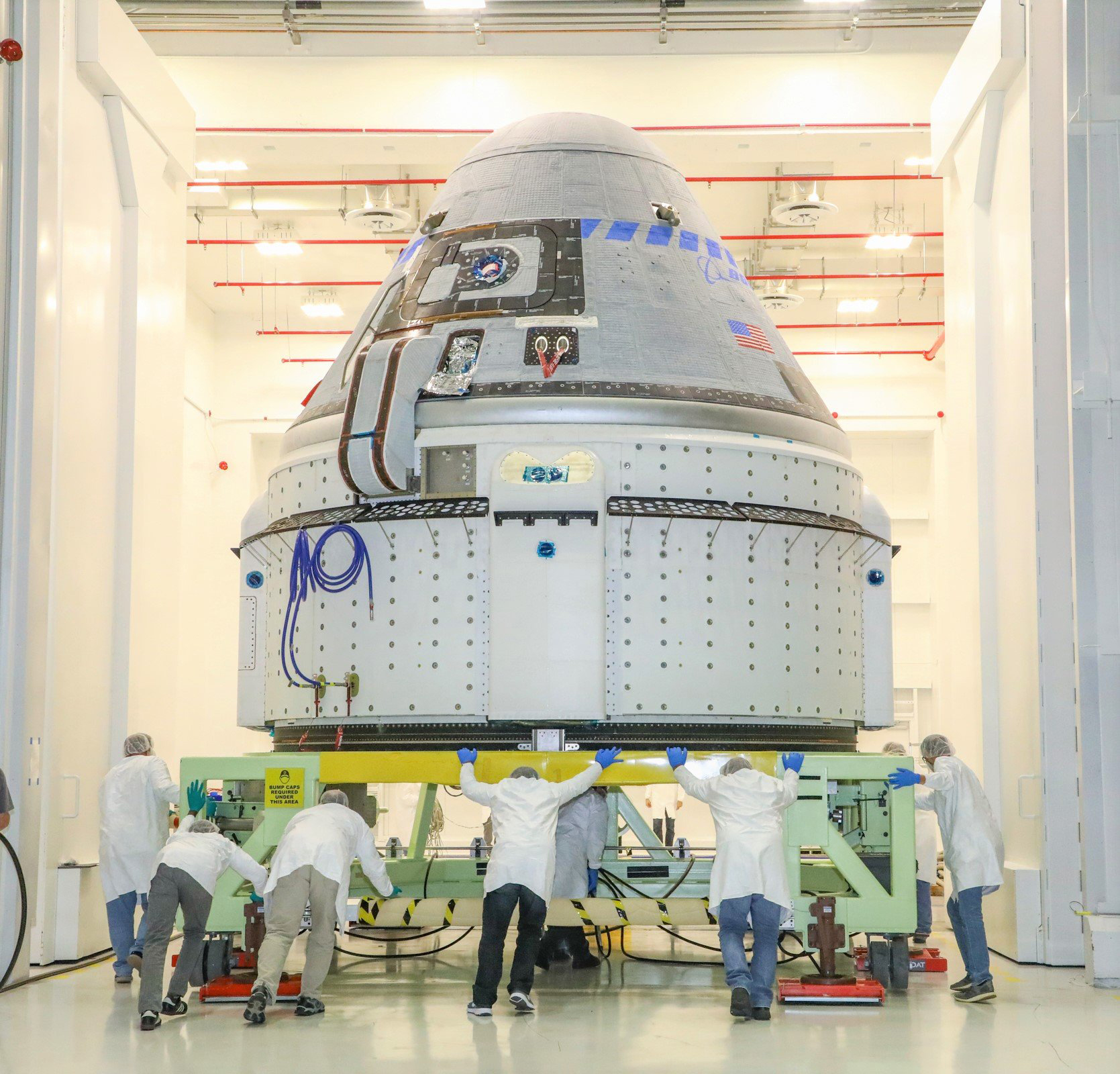Boeing Will Launch a Starliner Abort System Test Today. Here's How to Watch
The test begins at 9 a.m. EST (1400 GMT).
Boeing will test a critical launch escape system for its new Starliner capsule for astronauts today (Nov. 4) and you can watch it live online.
The test, scheduled for 9 a.m. EST (1400 GMT), will launch Boeing's CST-100 Starliner capsule from a stand at the White Sands Missile Range in New Mexico to demonstrate the spacecraft's launch abort engines, which are designed to rip the crew capsule from its Atlas V rocket during an emergency.
You can watch Boeing's Starliner abort test here and on Space.com's homepage starting at 8:50 a.m. EST (1350 GMT), courtesy of NASA TV. Boeing has a three-hour window in which to launch the test from Launch Complex 32 of the missile range.
Video: How Boeing's Starliner Pad Launch Abort Test Works
Related: The Emergency Launch Abort Systems of SpaceX and Boeing Explained
"This will be Boeing's first flight test as part of NASA's Commercial Crew Program and will help evaluate the performance of the abort system prior to missions to the International Space Station with a crew onboard," NASA officials said in a statement.
Boeing is one of two commercial companies with NASA contracts to fly astronauts to and from the International Space Station. The other company is SpaceX, which launched an uncrewed orbital test flight earlier this year and is expected to test the abort engines of its Crew Dragon capsule later this week.
But before Boeing and SpaceX can launch astronauts into orbit, the companies have to prove their vehicles can keep astronauts safe during a launch emergency. In October 2018, a Russian Soyuz rocket failed just after liftoff, triggering its launch abort system to pull its Soyuz crew capsule free and safely returning NASA astronaut Nick Hague and cosmonaut Alexey Ovchinin back to Earth.
Breaking space news, the latest updates on rocket launches, skywatching events and more!
Unlike the Soyuz, which used a launch abort system on a tower atop the capsule, Boeing and SpaceX use pusher systems with thrusters attached to their capsules. Boeing's Starliner uses four launch abort engines designed to push the capsule free from it Atlas V booster with a combined 160,000 lbs. of thrust, according to a NASA description.
For today's test, Boeing will perform what NASA calls a "zero-zero" test, in which an abort occurs on while a rocket is on the launchpad. Shortly after ignition, Starliner's orbital maneuvering thrusters also fire to make sure the capsule maintains the proper orientation to deploy its parachutes for the descent back to Earth.
Infographic: How Boeing's CST-100 Starliner Works
"The vehicle is expected to reach an altitude of about 4,500 feet above the ground, and push about 7,000 feet (about 1 mile) north of the test stand," NASA officials said.
About 19 seconds into the flight, Starliner should eject the protective cover and heat shield over its parachutes, then deploy a drogue chute before releasing its main parachute system.
Once those main chutes deploy, Starliner's service module should separate along with the base of the spacecraft's heat shield. (The service module will crash back to Earth and won't survive the test, but it's not expected to.) The crew capsule's airbags, designed to cushion Starliner's final landing on the ground, should then inflate.



If all goes well, Boeing's Starliner launch abort test should last just 1.5 minutes.
"The zero-zero abort scenario is especially challenging because the spacecraft abort system must quickly get away from a potentially dangerous rocket, but also must gain enough altitude and distance for the parachutes to open and landing systems to be activated," NASA officials said in a statement. "The abort test will provide Boeing and NASA with reams of data to help evaluate and verify the performance of the vehicle’s abort systems – a critical capability for NASA's certification of Starliner to fly astronauts to station."
Boeing's abort test comes just over a month ahead of the company's first orbital launch of a Starliner spacecraft. That mission, the uncrewed Orbital Flight Test, is scheduled to launch Dec. 17. The first crewed Starliner mission, called the Crew Flight Test, is expected to launch in early 2020 with Boeing astronauts Chris Ferguson (a former NASA shuttle commander) and NASA astronauts Mike Fincke and Nicole Aunapu Mann.
Email Tariq Malik at tmalik@space.com or follow him @tariqjmalik. Follow us @Spacedotcom and Facebook.

Tariq is the award-winning Editor-in-Chief of Space.com and joined the team in 2001. He covers human spaceflight, as well as skywatching and entertainment. He became Space.com's Editor-in-Chief in 2019. Before joining Space.com, Tariq was a staff reporter for The Los Angeles Times covering education and city beats in La Habra, Fullerton and Huntington Beach. He's a recipient of the 2022 Harry Kolcum Award for excellence in space reporting and the 2025 Space Pioneer Award from the National Space Society. He is an Eagle Scout and Space Camp alum with journalism degrees from the USC and NYU. You can find Tariq at Space.com and as the co-host to the This Week In Space podcast on the TWiT network. To see his latest project, you can follow Tariq on Twitter @tariqjmalik.

